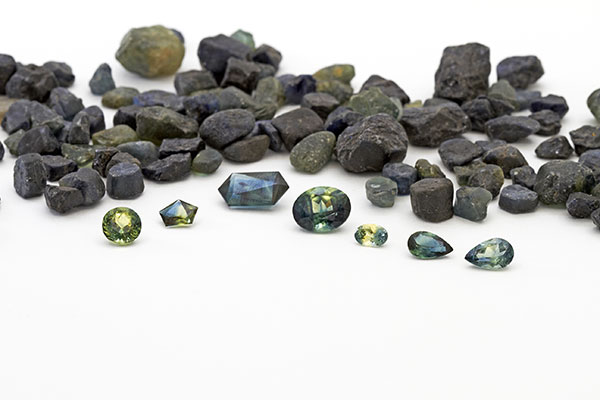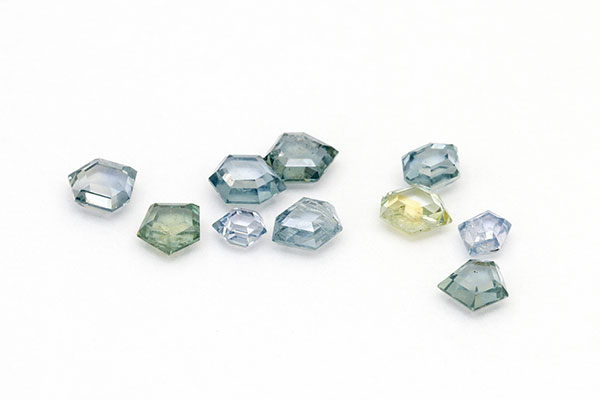
Here at JCK, we like to think of Stuart Robertson (pictured) as our personal gemstone oracle. As vice president of Gemworld International, Robertson heads up research for the Glenview, Ill.–based firm, our go-to source for the latest information on supply, demand, pricing, and other critical issues in the colored stone marketplace.
We spoke to Robertson in the run-up to the holiday, when the most recent COVID-19 surge, fueled, in part, by the more contagious omicron variant, threatened to impact attendance at the Tucson gem shows, particularly among international buyers and dealers. While he expressed concern about the pandemic’s continuing disruption of the gemstone supply chain, he thinks that buyers who do go will be able to find goods that may prove scarce later in the year.
“Eventually, the supply chain will improve and repair itself, but nobody knows when,” he said. “There’s no reason to sit out on the sidelines.”
The interview has been edited for length and clarity.
We’re talking a few days before the holiday. How has the season shaped up for color? Are jewelers in desperate need of fresh inventory?
People are in need. If we’d had this conversation last month, I would have said Tucson is going to be an excellent show. Now, I’m not so sure. With the way COVID is spreading, I think COVID will be the big story in Tucson. We’ll see restrictions to limit overseas travel that were not anticipated a few weeks ago.
On the flip side, now that we see omicron spreading all over the place, it pushes back even further any return to mining and international buyers to mining locations. Which means that supply chains remain disrupted. And we continue to see shortages, especially in places like East Africa, where there are many important gemstones, and there haven’t been any buyers. Those laborers who work the mines leave to find work and the longer it takes international buyers to come back, the fewer miners return. I think we’ll see shortages that extend into 2022.
Is East Africa the only place where this is happening, or do those disruptions extend to the rest of the colored stone world?
I mention East Africa because now it’s probably the most prolific producer of colored stones, not Asia, including fancy sapphires and, obviously, ruby from Mozambique as well as many of the popular garnets and tourmalines. East Africa is a very important resource for the trade. And what’s happening there is also happening in Asia and elsewhere. The challenge remains in general until COVID passes. Prices remain strong, and availability remains kind of sketchy.
This is one of the things we saw at JCK Las Vegas. Some of the big corporate buyers, the big chain buyers, didn’t attend and won’t attend Tucson. If you need a single stone, you can find it in this market, but if you need 1,000 matched sapphires for a large line of goods, you can’t get those with any consistency.
If international buyers can’t make it to Tucson, what does the show look like with only domestic attendees?
For decades, it’s been a big show with a mix of domestic and international attendees, but the big incentive for people to attend is because of the access to international dealers. Because of everything that’s happened in Hong Kong, the show that used to follow Tucson—with the quarantines and also the political situation—Tucson was clearly back to being the world’s major colored stone gem fair. It’s going to be interesting to see what happens, but COVID will curb the amount of enthusiasm for this upcoming show.
Let’s switch gears and talk color. Do you anticipate a very blue Tucson given Pantone’s choice for 2022 color of the year, Very Peri?
There’s always some attention paid to it, mostly at the designer end of the market. Traditionally in the colored stone trade, blues do very well. Blue sapphire remains the No. 1 seller, but we’ve seen so much demand for teal-colored stones, not just sapphires but any teal-colored stone, from tourmalines on down. And a lot of the garnets are popular too.
My feeling is that anybody who does go to Tucson will be rewarded by there being a fair amount of material there. Especially smaller independent jewelers and designers.
Eric Braunwart at Columbia Gem House has been selling a lot of mixed color sapphires, blue-green peacock, and teal-colored stones. Those have been very popular. So are the peach-colored stones—not padparadscha because that’s gotten too expensive but things that come close. And we’ll probably see more interest in emerald because it’s one of the few areas where there’s been some production. We’ve seen a number of companies producing sapphires in Australia, so we’re seeing a lot of interesting parti and bicolored sapphires coming into the market, and those will be popular because price points are affordable and the colors are interesting.

What’s new with pearls?
One of the other things that’s going to be interesting because of the pandemic is watching the pearl market. Unlike the gem trade, if mining stops, stones are still in the ground. But the pearl industry lost a whole cycle of implanting products. I think you can anticipate a shortage of finer material developing until probably 2025 because two harvest seasons were partially compromised because of COVID—things not getting implanted and put in the waters. So in Tucson, I’d be looking to buy the finer pearls because they may not be so easy to source. South Sea and akoya, Tahitian—mostly the marine pearls. Freshwater will also have had a similar experience, but it will be more dramatically felt in the South Sea.
Any parting thoughts for buyers hoping to make it to Tucson?
For independent custom jewelers and designers, I would buy beyond immediate needs because I don’t see the challenges to the supply chain easing as quickly as people believe. It could be well into the second half of 2022 before we see production improving again. So instead of buying for immediate calls, if you see something you like, now’s the time to get it. It may not be so easy to source later in the year.

Follow JCK on Twitter: @jckmagazine
Follow JCK on Facebook: @jckmagazine






